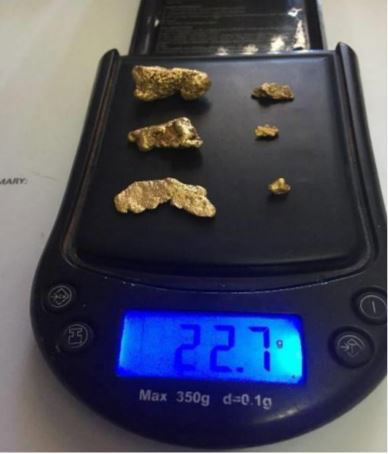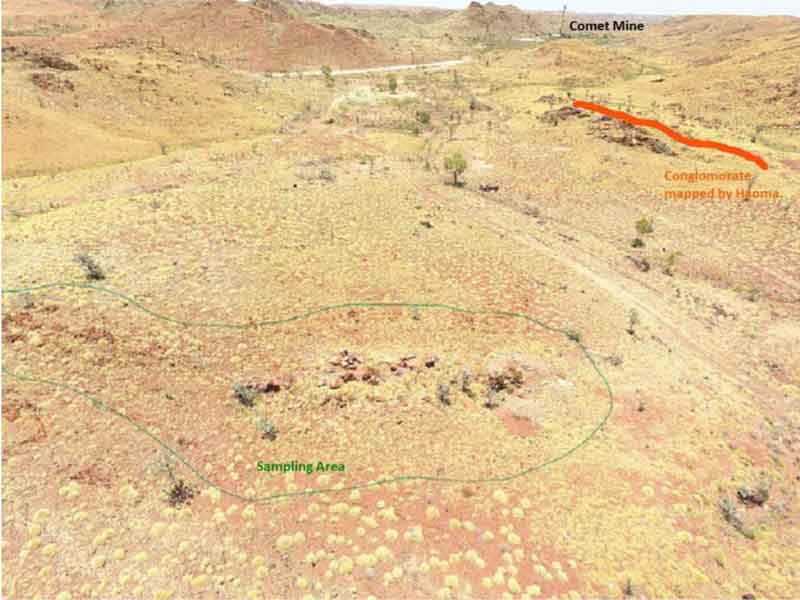MinRex uncovers more gold in East Pilbara rock chip samples; shares up 5pc
Mining
Mining
MinRex Resources has received the results of recent rock chip sampling at its Marble Bar project showing gold grades of up to 17.1 grams per tonne and confirming the prospectivity of the area.
Anything above 5 grams per tonne (g/t) is considered high grade — a result that is becoming harder to find at surface in Australia.
MinRex’s recent exploration efforts returned ten rock chip samples with an average grade of 2.6 g/t, which is still considered medium grade.
“The results received to date suggest that both P45/3039 and P45/3040 sites at Marble Bar are highly prospective for gold mineralisation,” executive director Simon Durack said.
Shares were up 5 per cent at 8.9c on the back of the news.
This latest find is in addition to the initial discovery of six gold nuggets totalling 22.7 grams made in mid-December 2017 at the East Pilbara projects in Western Australia.

The company (ASX:MRR) is acquiring a 70 per cent stake in five highly prospective licences — including some with conglomerate gold potential that border areas controlled by Artemis Resources (ASX:ARV) and Canadian partner Novo Resources, Haoma Mining (ASX:HAO), and renowned prospector Mark Creasy.
MinRex has since welcomed Artemis onto its share register as part of a strategic private placement in late 2017.
Artemis and Novo started the current nugget rush in the Pilbara with a now legendary announcement in July last year regarding a gold nugget find at their Purdy’s Reward site south of Karratha, Western Australia.
Old workings yield new gold
The rock chips were all of vein quartz rocks collected from old workings and diggings in the north of the tenement area, adjacent to a significant number of historical workings that are up to 10m deep.
These workings are not in the Department of Mines, Industry Regulation and Safety database and no historical production records are available.
MinRex was targeting the basal part of a conglomerate along strike from gold occurrences on the adjacent tenements owned by Haoma Mining.

Regional mapping by the Western Australian Geological Survey has identified these conglomerates as a part of the Mt Roe Basalt, the basal part of the Fortescue Group.
The presence of Mt Roe Basalt within the Marble Bar project area is significant in terms of gold potential.
Mt Roe Basalt is a volcanic rock formation in the Pilbara’s Fortescue Basin which is known to host gold mineralisation as well as copper, zinc and uranium.
The large number of old workings and diggings in this area, in conjunction with the excellent assay results received from these initial 10 rock chip samples is considered highly encouraging for the discovery of potentially economic gold mineralisation in this area.
As a result of the promising early results, additional work has been recommended on all of the East Pilbara project areas.
MinRex will undertake extensive rock chip sampling and the excavation of bulk samples from the Marble Bar tenements along with detailed geological mapping once the historical data compilation is completed.
This special report is brought to you by MinRex Resources.
This advice has been prepared without taking into account your objectives, financial situation or needs. You should, therefore, consider the appropriateness of the advice, in light of your own objectives, financial situation or needs, before acting on the advice.
If this advice relates to the acquisition, or possible acquisition, of a particular financial product, the recipient should obtain a Product Disclosure Statement (PDS) relating to the product and consider the PDS before making any decision about whether to acquire the product.